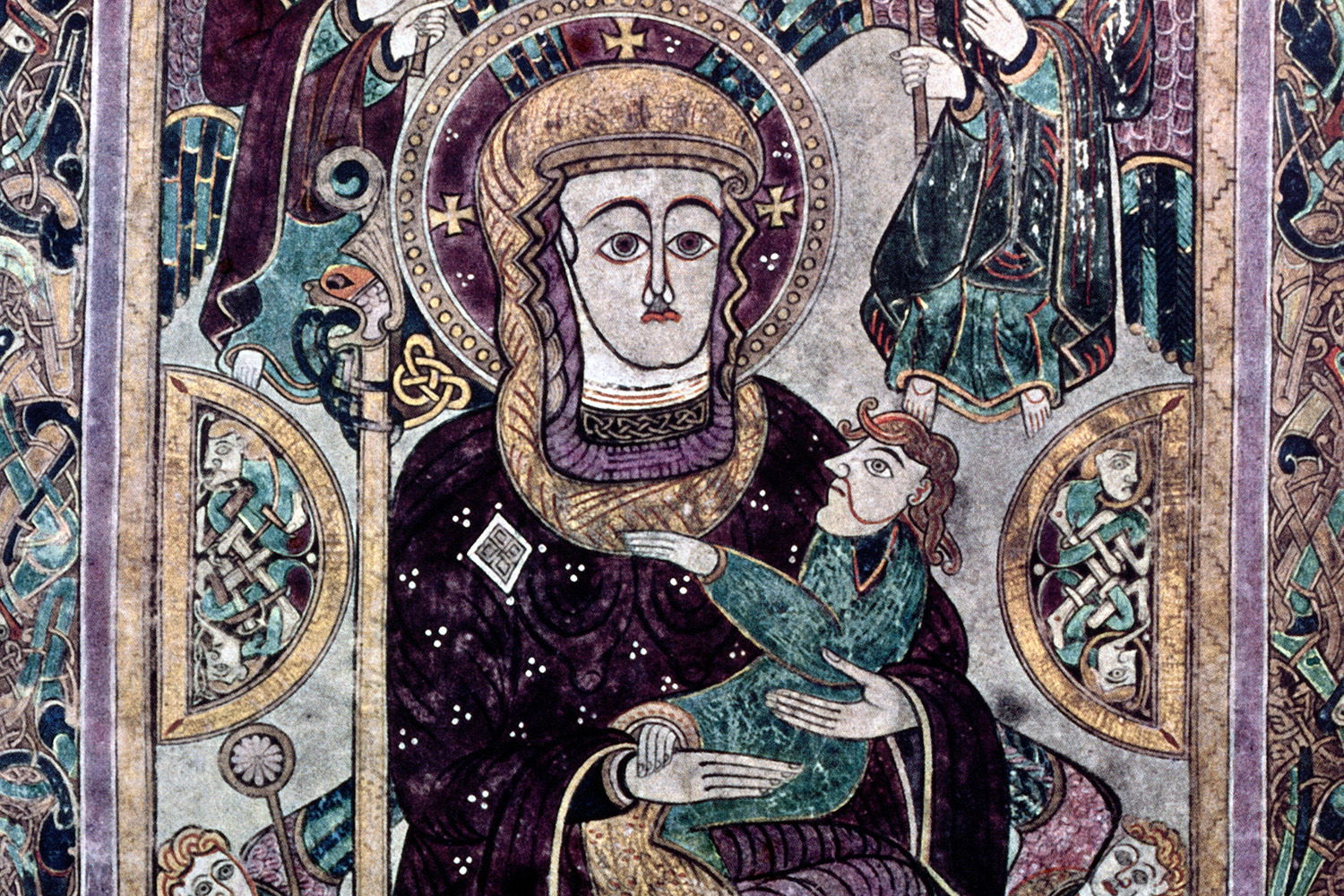by GILLIAN KENNY
 The Virgin and Child depicted in the Book of Kells, 9th century.
The Virgin and Child depicted in the Book of Kells, 9th century.
In medieval Ireland divorce, contraception and abortions were readily available. The country’s recent political and cultural changes take it much closer to its pre-modern past.
On 26 May 2018, after a divisive nationwide referendum, Ireland voted to repeal the Eighth Amendment to its constitution, legalising abortions. The increasing secularisation of Irish society has been rapid and, for anyone who grew up there, astonishing. Just 30 years ago there was no divorce in Ireland. Homosexual sex was illegal, as were contraceptives. Any woman who sought an abortion had to travel outside the state. Ireland was a bastion of intensely restrictive Catholic teaching enshrined within its Constitution, which was established under heavy Church influence in 1937. Father John Charles McQuaid, future archbishop of Dublin, was involved in the formulation of the articles dealing with personal rights, the family, education, private property, religion and the principles of social policy. The Church’s hold on the state was, it seemed, unbreakable.
The reasons for the subsequent demise of Catholic power in Ireland are many. Prominent, though, is the increasingly affluent, sophisticated, well-travelled (including returning emigrants) and well-educated urban populace, who are unwilling to adhere to the diktats of a theocracy which has been enfeebled by numerous high-profile scandals over the last 30 years. The waning influence of the Church might be lamented by the country’s religious conservatives, but this is no new dawn for Ireland. The Irish have been here before, ignoring the teachings of Rome and making legal provision for the complex needs of the many.
For much of Irish history – from the period when we first encounter written sources in the early medieval era, through to the early modern period – the Church played a relatively minor role in people’s day-to-day lives. In medieval Ireland, marriage was, largely, a secular event both for those living in culturally English as well as Gaelic areas. In many cases neither blessing nor any priestly intervention was needed in order to legitimise a marriage. The Church’s hold on marriage was always far stronger in Anglo-Irish controlled areas than in Gaelic ones – and its influence on Gaelic areas increased as the Middle Ages wore on – but the modern idea of a church wedding conducted by a priest was not the reality for most people. Indeed, within areas adhering to Gaelic Irish legal norms, a contract was drawn up between couples and their families, a party was held to celebrate the union and, if it did not work out, a divorce could be obtained according to the Gaelic legal codes which governed such matters.
The legal tradition of medieval Ireland is immensely impressive. It is the largest corpus of legal texts extant in Europe before the 12th century and its laws show a sophisticated understanding and a willingness to address complex relationships. Among the early texts is the eighth-century law tract, Cáin Lánamna (The Law of Married Couples). Marriage was loosely defined – by this text alone a man could have several types of wife. A woman held differing status depending on whether she was a primary wife of equal status to her husband, a wife of lower status, of higher status, a concubine, or involved in a more casual union. Her status also depended on whether she had sons or not. Concubines figured in the lives of many men and may have been maintained in addition to a wife.
History Today for more
